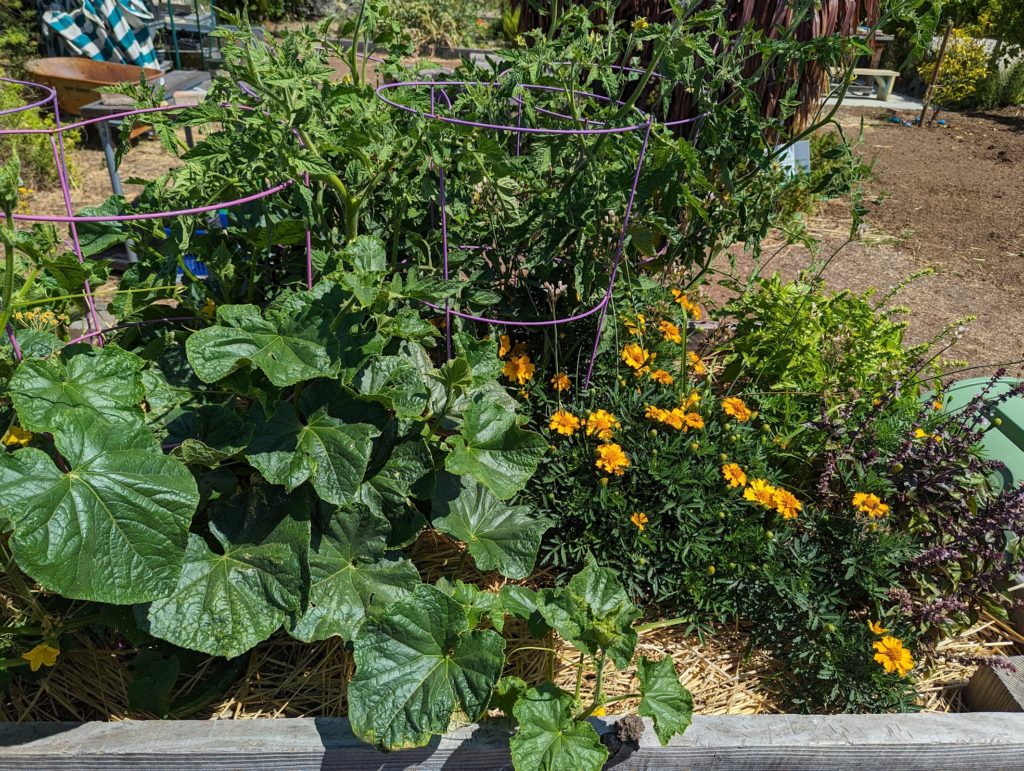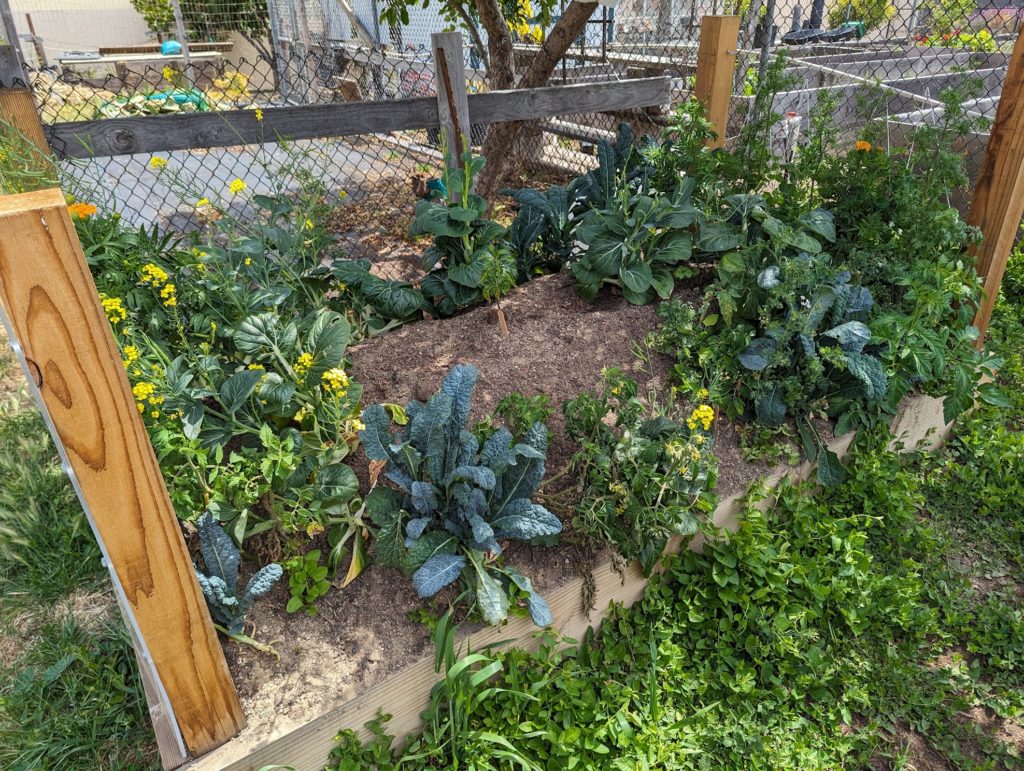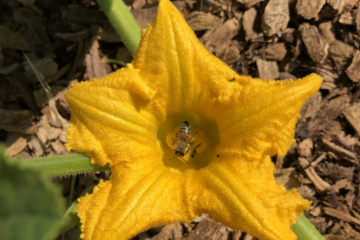Written by Taylor Mogavero, Program Coordinator
As climate change continues to reshape our planet, it’s becoming increasingly important to adapt our lifestyles to mitigate its effects. From the floods we experienced in the Bay Area this past winter to the hottest day on Earth ever recorded this past July 4th, climate change is already here and we need to build resilience in our environment. For those of you who have a garden or yard, this means reevaluating traditional gardening and landscaping practices and embracing strategies that promote resilience in the face of a changing climate. In this blog, we will explore practical tips and innovative techniques to help you adapt your garden or yard to survive and thrive on a continually changing planet.

Choose Climate-Appropriate Plants
Start by selecting plants that are well-suited to your region’s changing climate. Look for species that exhibit resilience in the face of drought, heatwaves, or increased rainfall. Native plants are often well-adapted to local conditions, requiring less maintenance and resources. Check out our previous posts on native plants: Native Garden Templates, Native Wildflowers, Native Plants with Grassroots Ecology. Additionally, explore heat-tolerant or drought-resistant varieties, and consider planting a diverse range of species to promote biodiversity and enhance the overall resilience of your garden.
Optimize Water Management
Water scarcity and irregular rainfall patterns are common consequences of climate change. Therefore, it is essential to optimize water management in your garden. Consider implementing water-saving techniques such as drip irrigation systems, mulching, and rainwater harvesting. Check out our previous blog on water management: Drought-Friendly Gardening Tips, 5 Sustainable Gardening Practices. These methods minimize water loss through evaporation, deliver water directly to plant roots, and ensure efficient utilization of available resources. Additionally, grouping plants with similar water needs together can further enhance water conservation efforts.
Build Healthy Soil
Healthy soil is the foundation of a resilient garden. Climate change may alter soil conditions, making it necessary to improve soil structure and fertility. Incorporate organic matter like compost or well-rotted manure to increase soil moisture retention, enhance nutrient availability, and encourage beneficial microbial activity. Healthy soil acts as a buffer against extreme weather events, provides a nurturing environment for plants, and improves overall plant health.
Embrace Sustainable Pest and Disease Management
Changing climate patterns may lead to shifts in pest populations and the emergence of new diseases. To manage pests and diseases sustainably, focus on prevention rather than relying heavily on chemical solutions. Practice good garden hygiene, promote biodiversity, and encourage natural pest predators. Implement companion planting strategies that deter pests, utilize physical barriers, and employ organic and biopesticides when necessary. By adopting a holistic and eco-friendly approach, you can maintain a healthy balance in your garden ecosystem.
Practice Smart Timing
Changing climate patterns may affect traditional planting schedules. Monitor local weather patterns and adjust your planting calendar accordingly. Planting earlier or later in the season can help you take advantage of optimal weather conditions and avoid extreme temperature fluctuations.
Provide Shade and Wind Protection
Rising temperatures can stress plants and increase water needs. Consider creating shade structures using shade cloth, trellises, or strategically positioned trees and shrubs. Providing shade not only keeps plants cooler but also reduces water loss through evaporation. Wind can also cause damage and increase moisture loss. Plant windbreaks using dense hedges or fences to shield vulnerable areas of your garden.
Encourage Biodiversity
Promoting biodiversity in your garden or landscaping is crucial for building resilience. Plant a variety of species that attract pollinators and beneficial insects. These garden helpers play a vital role in pollination, pest control, and maintaining ecological balance. Additionally, diverse plantings create microclimates, which can buffer extreme temperatures and protect delicate plants.
Stay Informed and Adapt
Climate change is an ongoing process, so staying informed is crucial. Monitor local weather patterns, attend gardening workshops, and connect with gardening communities to learn from others’ experiences. Remain flexible and adaptable in your gardening practices, experimenting with new techniques and plant varieties that suit the evolving climate.
Adapting your garden or yard to a changing climate is a journey that requires awareness, resilience, and a commitment to sustainable practices. By choosing climate-resilient plants, prioritizing water efficiency, improving soil health, and embracing biodiversity, you can create a garden that thrives amidst climate challenges. Remember to stay informed, experiment, and be open to learning from both successes and setbacks. Through our collective efforts, we can cultivate gardens that not only bring us joy but also contribute to a greener and more sustainable future.

Sources:
Gardens Illustrated. How are gardeners adapting to climate change?
RHS. What can I do about climate change in my garden?
The National Wildlife Federation. Gardening for Climate Change.
University of Maryland Extension. Sustainable Gardening: Solutions to Climate Change.



0 Comments